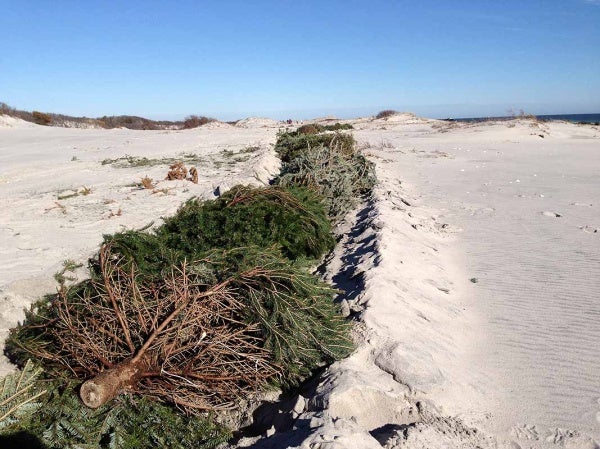Access to Island Beach State Park grows as Superstorm Sandy cleanup continues
-

-

-

-

-

-

-

-

-

Island Beach State Park (Sandy Levine for WHYY)
-

-

The main roadway in Island Beach State Park has been cleared of sand, which in some places was seven feet deep after Superstorm Sandy ravaged the Jersey Shore. Flood-damaged buildings are being repaired. Tons of debris has been picked up from the beaches. After being closed for three months, one of the state’s most popular parks gradually began reopening in January, and today about half of Island Beach is open. Park officials are planning for full access by the peak summer season, but six months post-Sandy, recovery here is still a work in progress.
“We’re making every effort to be fully functional this season, but things may be a little bit different,” said Ray Bukowski, manager of Island Beach State Park. “We’re trying to get in under the wire to rebuild our boardwalks off the bathing pavilions. We’re working on bids to have them constructed,” he said. “We just need a little bit of patience and understanding.”
Park offers a peek into the past
In dramatic contrast to the typical New Jersey shoreline—jam-packed with houses, marinas, restaurants and amusements—Island Beach State Park is one of the few remaining mostly undeveloped barrier beaches on the north Atlantic coast. Entering the park’s gates, less than three miles south of the hustle and bustle of Seaside Heights, is like stepping back in time: miles of dunes and pristine ocean beaches lie on the east side, with wetlands and tidal marshes lining the park’s west side along Barnegat Bay.
About a million people a year come to this narrow, nearly 10-mile-long park in Ocean County to swim, fish, hunt, bike, kayak, crab, bird-watch, study nature and more. In fact, due to limited parking, on some hot summer days Island Beach closes by midmorning to drivers, although bicyclists and walkers may still enter.
Volunteers help remove debris
After tons of storm debris washed up along the shore here in places inaccessible to large machinery, hundreds of the park’s devotees, including members of the NJ Beach Buggy Association, showed up to clean the beaches—by hand. Today lumber, tires, pieces of siding and other debris are piled in a parking lot, awaiting removal within the next couple of weeks.
Still, nearly half a year post Sandy, sporadically the ocean churns up remnants of homes and businesses destroyed during the storm: just last week a boardwalk ride car and several large timbers all were newly deposited on the beach, according to Bukowski. But he said the pace has slowed significantly, and by Memorial Day weekend bathing beaches will be open with lifeguards on duty.
“We’re going to have to kind of roll with the punches to see what kind of debris we have,” said Bukowski. “Hopefully it continues to wane, and we’ll stay ahead of it. That will be our primary concern over the summer is just keeping people safe. But we will be open. The park will be open.”
Regrowing protective dunes
Superstorm Sandy breached Island Beach State Park’s extensive, protective dune system in several places. During the winter volunteers laid thousands of discarded Christmas trees parallel to the ocean in shallow trenches, hoping the trees would catch blowing sand and grow into tall dunes over time. With the help of dune grass planted by the Friends of Island Beach State Park, the project is taking hold. “Within two weeks most of the trees were completely covered with wind-blown sand,” Bukowski said. “So we went ahead and put (dune) fencing in front of the trees, and we’ve started to build that profile, and in a couple of months we’ve come up three and a half to four feet in some of the most impacted areas of the park. So it’s really significant, a real positive.”
Fishing hot spot
In another small step towards normalcy, 2013 mobile sport fishing permits went on sale last Friday in the park. The permits allow fishermen to drive four-wheel vehicles on some areas of the beach, normally including up to the Barnegat Inlet jetty at the park’s southernmost tip. But the storm toppled some of the massive boulders that comprise the jetty into the inlet, meaning at least part of this popular fishing area may be off limits.
“We have to make sure that the jetty is protected,” said Bukowski, adding that the Army Corps of Engineers is taking the lead on the structure’s repair. “We don’t want to promote access which is going to exacerbate the erosion. It’s one of our struggles we have right now is to try to figure out tangible, yet safe access that’s not going to compromise the inlet or our visitors.”
Tom O’Brien, who has been surf fishing in Island Beach State Park for decades, said he’s aware of the tremendous scope of Sandy’s damage, and he’ll remain patient during the rebuilding process, at least until striped bass season is in full swing. “We can live with it,” said O’Brien. “As long as they fix it and repair it and get it ready for the fall season. We understand and we want it safe and beneficial to all the people,” he said. “Let’s make it safe. Let’s do it right.”
Access to Island Beach State Park currently is free while restoration continues. Normal in-season weekday entrance fees are $6 per vehicle for New Jersey residents, $12 for nonresidents, with weekend and holiday rates $10 per vehicle for residents, and $20 for nonresidents.
__________________________________________________
Sandy Levine is a freelance writer and television producer who was born and raised at the Jersey Shore.
WHYY is your source for fact-based, in-depth journalism and information. As a nonprofit organization, we rely on financial support from readers like you. Please give today.




